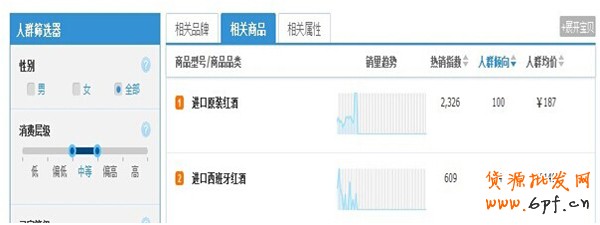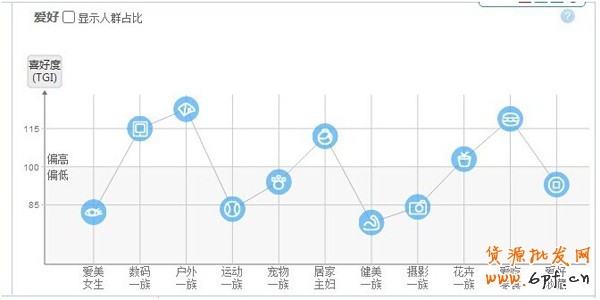 nmousewheel="return bbimg(this)" onload="javascript:resizepic(this)" border="0"/>
nmousewheel="return bbimg(this)" onload="javascript:resizepic(this)" border="0"/>
对于红酒,肯定是卖给需要喝酒的人,并且喜欢喝红酒的人。通过价位段的分析,我们知道目标客户是怎样的收入。根据里面的数据显示,分析总结数据。看下图。
 nmousewheel="return bbimg(this)" onload="javascript:resizepic(this)" border="0"/>
nmousewheel="return bbimg(this)" onload="javascript:resizepic(this)" border="0"/>
低端客户一般会选择50块钱左右的红酒。
 nmousewheel="return bbimg(this)" onload="javascript:resizepic(this)" border="0"/>
nmousewheel="return bbimg(this)" onload="javascript:resizepic(this)" border="0"/>
偏低端的会选择80-100之间的红酒。
 nmousewheel="return bbimg(this)" onload="javascript:resizepic(this)" border="0"/>
nmousewheel="return bbimg(this)" onload="javascript:resizepic(this)" border="0"/>
中等收入的人会选择一百多的红酒。
 nmousewheel="return bbimg(this)" onload="javascript:resizepic(this)" border="0"/>
nmousewheel="return bbimg(this)" onload="javascript:resizepic(this)" border="0"/>
而相对偏高端的人,他们喜欢喝红酒的话会选择两百多的红酒。
 nmousewheel="return bbimg(this)" onload="javascript:resizepic(this)" border="0"/>
nmousewheel="return bbimg(this)" onload="javascript:resizepic(this)" border="0"/>
然后再通过相关品牌及相关属性找到更喜欢我们产品的一类人群。如卖的是澳洲红葡萄酒
 nmousewheel="return bbimg(this)" onload="javascript:resizepic(this)" border="0"/>
nmousewheel="return bbimg(this)" onload="javascript:resizepic(this)" border="0"/>
通过上面的选择,我们发现30-35岁男士白领偏低收入的人群喜欢澳洲红葡萄酒的较多。这个具体还是得要自己去手动调查数据发现得知。然后,我们再在市场趋势里搜索澳洲红葡萄酒。看看具体的数据。
 nmousewheel="return bbimg(this)" onload="javascript:resizepic(this)" border="0"/>
nmousewheel="return bbimg(this)" onload="javascript:resizepic(this)" border="0"/>
 nmousewheel="return bbimg(this)" onload="javascript:resizepic(this)" border="0"/>
nmousewheel="return bbimg(this)" onload="javascript:resizepic(this)" border="0"/>
30岁左右、中等偏低的白领人士、喜欢数码、户外运动以及爱吃零食,并且经常网购。再外散思维来想,这类人还有哪些特征,如,做什如何用淘宝指数来定位自己的顾客?